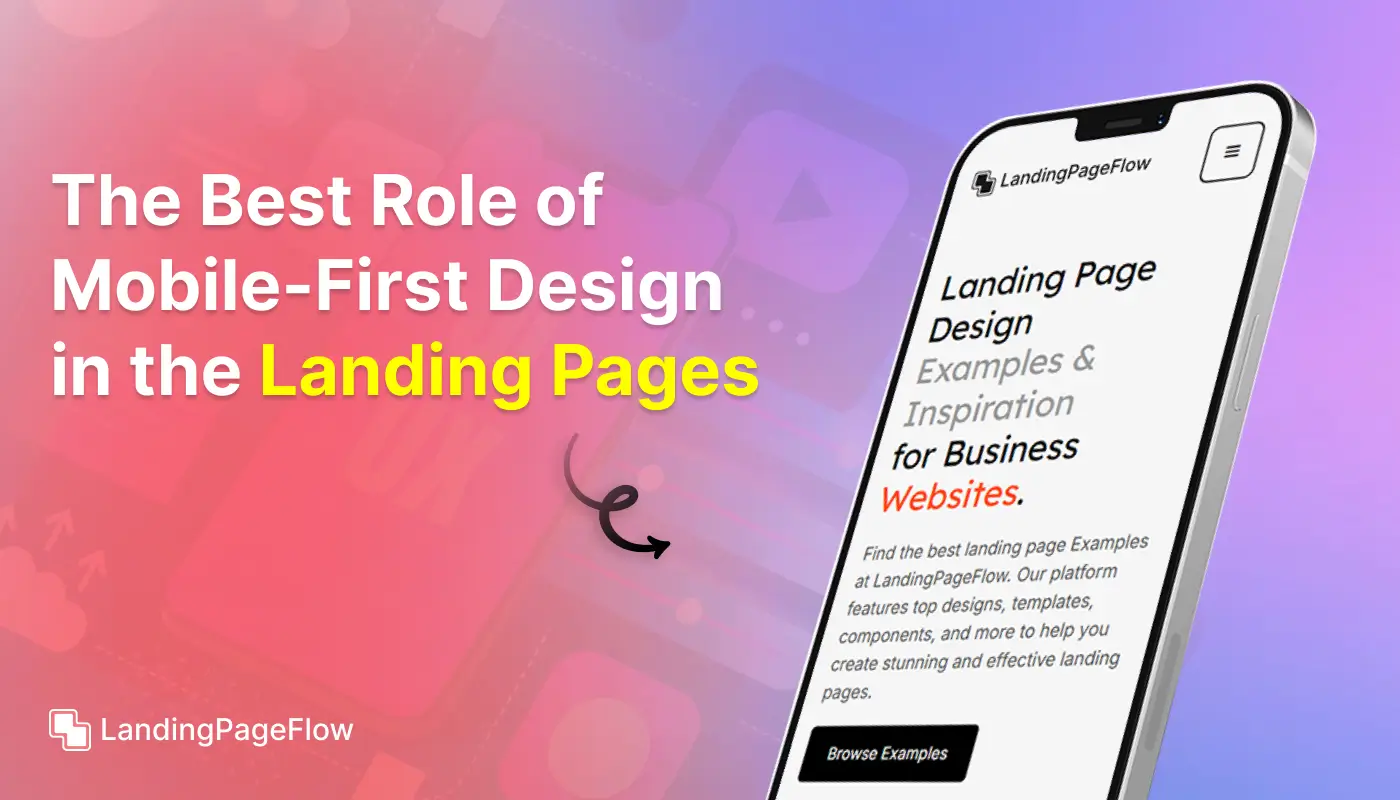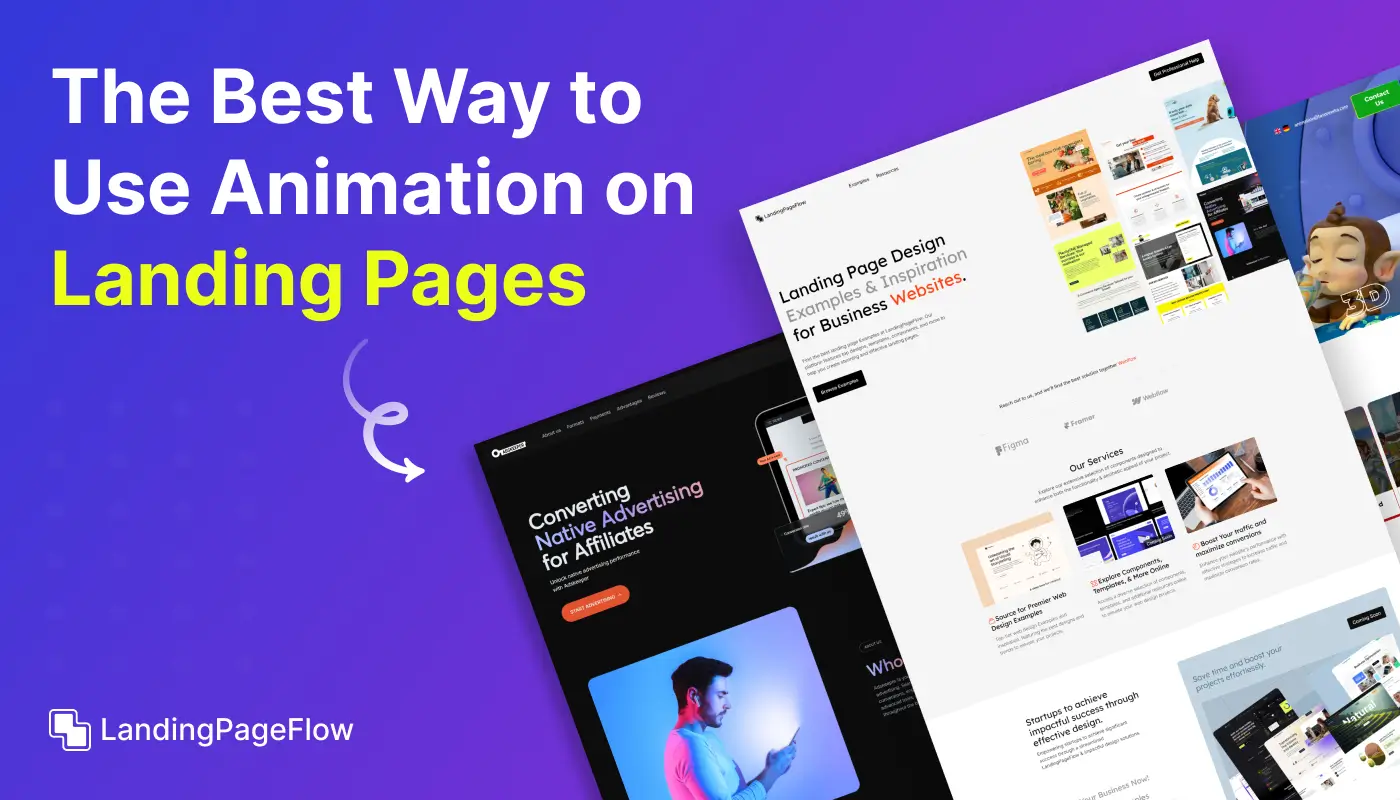One Landing Page to Rule Them All | Your Ultimate Design Guide

November 18, 2025
A single landing page can often do more for your business than a cluster of scattered campaigns. Many brands struggle to balance visuals, messaging, and performance, leaving visitors confused instead of engaged.
The right landing page simplifies choices and highlights exactly what matters, turning browsers into buyers without overwhelming them with distractions.
Strong typography, compelling visuals, and a seamless structure can elevate your message, keeping visitors focused on the next step instead of wandering.
Every element, from headlines to calls-to-action, needs to work together in harmony. This consistency reinforces trust and builds momentum toward conversion.
Attention spans are shrinking, making it more important than ever to craft a landing page that guides visitors effortlessly from interest to decision.
A strategy rooted in design psychology helps you highlight key benefits, reduce hesitation, and create pathways that feel intuitive for the user journey.
"Ready to elevate your online presence?
Access the free landing page guide & transform visitors into loyal customers."
Table of Contents
- What Makes a Landing Page Effective?
- Essential Elements of a High-Performing Landing Page
- Best Practices For a Clean and Powerful Design
- How to Write Compelling Copy For Your Landing Page?
- A/B Testing and Optimization Strategies
- Mobile-First Design: Why It Matters?
1. What Makes a Landing Page Effective?

A landing page is effective when it communicates its purpose and convinces visitors to take the desired action.
This could be signing up for a newsletter, purchasing a product, or downloading an ebook. The most successful landing pages:
- Have a clear goal: The page is designed with one specific action in mind.
- Offer value: Visitors should immediately understand what they stand to gain.
- Are visually appealing: Clean, modern design keeps visitors engaged.
- Use strong CTAs: Calls to action that stand out and inspire action.
An effective landing page seamlessly merges these elements to guide the user toward conversion with minimal friction.
2. Essential Elements of a High-Performing Landing Page

To build a landing page that converts, you need the following core components:
1. Headline
Your headline is your first impression. Make it strong, clear, and benefit-oriented. Visitors should know exactly what your offer is and why it matters to them.
2. Value Proposition
This is where you explain what sets your offer apart from the competition. Highlight the unique features and benefits your visitors will get from engaging with your page.
3. Visual Elements
Use high-quality images, videos, or infographics that support your message. Visuals should be eye-catching but not overpowering. Ensure they reinforce the purpose of the page.
4. Call to Action (CTA)
Your CTA is the most important part of your landing page. It should be strategically placed, easy to find, and use action-oriented language. Examples include:
- "Get Started Now"
- "Sign Up Today"
- "Claim Your Free Trial"
5. Social Proof
Social proof, such as testimonials, user reviews, and case studies, helps build credibility and trust. Visitors are more likely to convert if they see that others have had positive experiences.
6. Minimal Navigation
To keep users focused on the action you want them to take, reduce distractions by minimizing navigation options. The more choices you give, the less likely they are to convert.
3. Best Practices For a Clean and Powerful Design

1. Simplicity Wins
A clean, uncluttered design is key. The best landing pages have a simple layout with plenty of white space. This helps visitors focus on the essential elements without getting overwhelmed by unnecessary information.
2. Bold CTAs
Make sure your CTA button stands out with contrasting colors and bold fonts. It should be large enough to catch the eye but not so big that it feels out of place.
3. Visual Hierarchy
Use design elements like font size, color, and placement to guide the user’s eye toward the most important parts of the page (e.g., headline, CTA). The most crucial information should always be above the fold.
4. Consistent Branding
Your landing page should match the overall look and feel of your brand. Use consistent fonts, colors, and messaging to reinforce brand identity and provide a cohesive experience.
4. How to Write Compelling Copy For Your Landing Page?

Words are powerful, and your landing page copy needs to convince visitors to take action. Here’s how to craft compelling, concise, and action-oriented content.
1. Know Your Audience
Before you start writing, identify who your audience is and what problems they need to solve. Your copy should directly address their pain points and offer solutions.
2. Focus on Benefits, Not Features
While features are important, it’s the benefits that sell. Explain how your product or service will improve the visitor’s life or solve their problem.
3. Be Direct and Clear
Avoid jargon and fluff. Use straightforward language that makes it easy for visitors to understand your offer. Each sentence should have a purpose and lead the user toward your CTA.
4. Create a Sense of Urgency
Phrases like “Limited Time Offer” or “Sign Up Now Before It’s Too Late” encourage visitors to act quickly. Creating a sense of urgency can significantly improve conversion rates.
5. A/B Testing and Optimization Strategies

Even the best-designed landing pages can benefit from ongoing testing and optimization. A/B testing involves comparing two versions of a landing page to see which performs better.
What to Test:
- Headlines: Try different variations to see which grabs attention more effectively.
- CTA Buttons: Experiment with color, placement, and copy.
- Images: Test different visuals to see which resonates most with your audience.
- Form Fields: Try reducing the number of fields in your sign-up forms to increase completions.
By regularly testing different elements, you can continuously refine and improve your landing page to boost conversions.
6. Mobile-First Design: Why it Matters?

In today’s world, mobile traffic accounts for more than half of all website visits. That’s why mobile-first design is crucial when building your landing page.
Key Tips:
- Responsive Design: Ensure your landing page looks and works well on all screen sizes.
- Fast Load Times: Compress images and limit scripts to ensure the page loads quickly on mobile devices.
- Thumb-Friendly Buttons: Make sure CTA buttons are large and easy to tap on mobile screens.
- Clear, Readable Fonts: Use font sizes that are easy to read on smaller screens to enhance user experience.
Conclusion
Landing pages are more than digital entry points; they serve as conversion engines that determine how potential customers interact with your brand.
Brands that invest in thoughtful design see measurable differences in engagement, as visitors are encouraged to act quickly and confidently. Every detail, from layout to color choice, has the potential to influence perception and encourage trust, shaping stronger customer relationships.
Businesses that fail to refine landing pages risk leaving valuable leads untapped and losing opportunities to competitors who focus on precision. Modern users expect seamless, mobile-friendly experiences that deliver speed and clarity without unnecessary complications.
Your landing page has the potential to become your most powerful marketing asset once it reflects both user intent and your brand vision.

FAQ
1. What is the purpose of a landing page?
A landing page is designed to guide visitors toward a single, focused action such as signing up, purchasing, or booking a service.
2. How is a landing page different from a homepage?
A homepage introduces your brand broadly, while a landing page targets a specific campaign or offer for higher conversions.
3. What elements make a landing page effective?
Clear headlines, compelling visuals, concise copy, and a strong call-to-action are essential to capturing visitor attention and driving results.
4. How long should a landing page be?
There is no set length, but effective pages balance necessary information with clarity, ensuring users get value without feeling overwhelmed.
5. Can a business use just one landing page?
Yes, one strong landing page can be highly effective, but businesses often build multiple versions to test performance across campaigns.
6. How can I improve my landing page conversions?
Improvement comes from A/B testing headlines, refining design elements, optimizing speed, and ensuring mobile responsiveness.



















